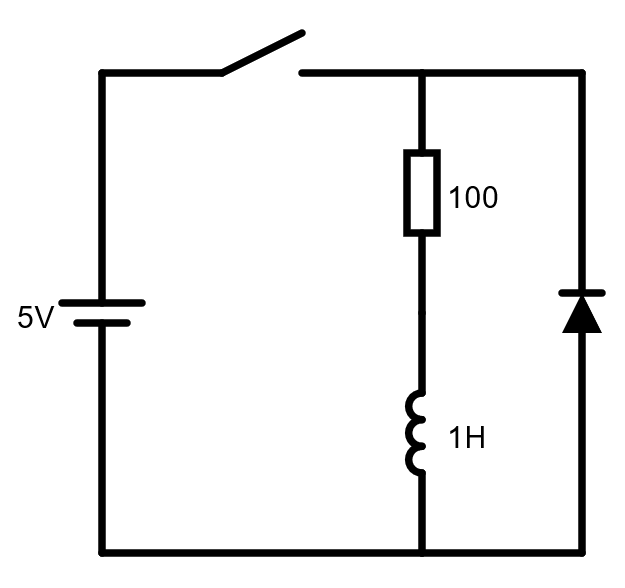3. The limiting diode¶
Rectifier diodes can also be used to limit current or voltage in circuits to prevent them from burning out.
Freewheel diode¶
Whenever we conduct current through a coil (motor, relay, etc.) the coil stores energy inside. By deactivating the coil, the stored energy is transformed into a voltage spike that attempts to keep the coil current constant. This voltage peak can burn the electronic components of the circuit, so a diode called 'freewheel' or 'freewheel' must be placed in parallel to the coil to conduct the coil current. until it is reduced to zero.
In the following circuits we can see the freewheeling diodes placed in parallel with the coil of a relay and another placed in parallel with a direct current motor (it has a large coil inside).
Input limiting diode¶
This scheme cuts the input voltage to around 0.65 volts, the conduction threshold voltage of the rectifier diodes.
It is a circuit usually used to protect the inputs of the most sensitive electronic circuits from high voltages, preventing an electrostatic discharge (a spark) from burning the electronic circuit.
Exercises¶
Draw the diagram of a 1 Henry coil in series with a 100 ohm resistor, in series with a switch and with a 5 volt battery.
Properly place a freewheel protection diode in parallel to the coil.
Use the circuit simulator to check that the circuit works correctly.
Add an oscilloscope to the previous circuit with the graph of the current through the coil.
Draw a graph of the current over time. On the X axis it represents time with ticks every second. On the Y axis it represents the current with marks every 10 milliamps.
Modify the above circuit so that the diode is in parallel with the coil and the resistor. Does functioning improve or worsen?

Redraw the graph of the current over time.